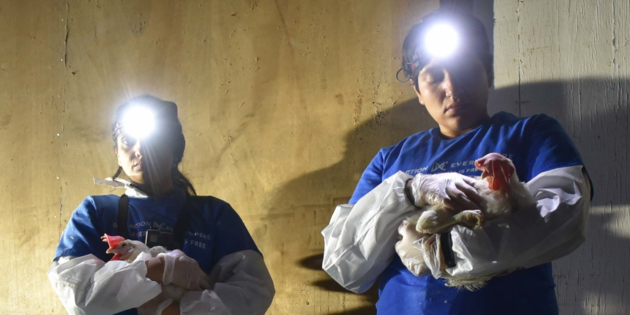
Wait for it… pic.twitter.com/RqN1bi5T9D
— Fellatio Alger (@atomiclust) January 23, 2017

Albert should have stayed with his family for many more weeks, but everything changed when a group of five young men visited the farm. They wanted to buy pigs to roast on spits, according to Mike Stura, founder of Skylands Animal Sanctuary and Rescue, and they set their sights on Albert and his siblings, who were Kunekune pigs.
“As far as I understand, four of them bought piglets, and one did not,” Stura told The Dodo. “Albert was the runt, and the farmer asked the fifth kid if he wanted the runt because he was so tiny, and the kid said ‘Yes.’ But he took him home to his parents — he didn’t want to kill him.”
Best. Typo. Ever. ? pic.twitter.com/33uJNG1bHM
— Claire Hammond (@ClaireHammond) January 22, 2017
*Honored Good grief. Four years of this. pic.twitter.com/RIiiyLXPP6
— George Takei (@GeorgeTakei) January 21, 2017
US Presidents, an infographic:
????????????????????
????????????????????
????????????????????
????????????????????
?????????
— Scott McCaughey (@scott_mccaughey) January 20, 2017
#Grateful pic.twitter.com/r1Hv84aBVS
— Mark Hamill (@HamillHimself) January 20, 2017
the realest mother fucker alive pic.twitter.com/qWW0eflqCH
— Kenny (@PhillyCustoms) January 20, 2017
God Bless Trump's America
(by @VicBergerIV) pic.twitter.com/ZbfMueKOp1— Super Deluxe (@superdeluxe) January 20, 2017
?HOLY SHIT? pic.twitter.com/OgCLU22nIw
— Jesse McLaren (@McJesse) January 19, 2017
http://ift.tt/2jHgv3p
http://ift.tt/2jH5cZ0
Caecilians are harmless to humans, but in their ecosystems they are ferocious predators. Unusual for an amphibian, the caecilian possesses a mouthful of needle-like, often backward-curving teeth meant for seizing prey. They also have a powerful bite; most animals have one set of muscles for closing the jaw. Caecilians have two. When prey, usually a worm, enters the caecilian’s tunnel, the amphibian latches on and then spins in a rapid, corkscrewing motion. This action pulls the entire body of the prey into the tunnel, and may have the advantage of disorienting the hapless animal. Most caecilians feed on worms and insects, but larger species may eat small snakes, frogs, and lizards.
http://ift.tt/2k6yErk
http://ift.tt/2jf1KWY